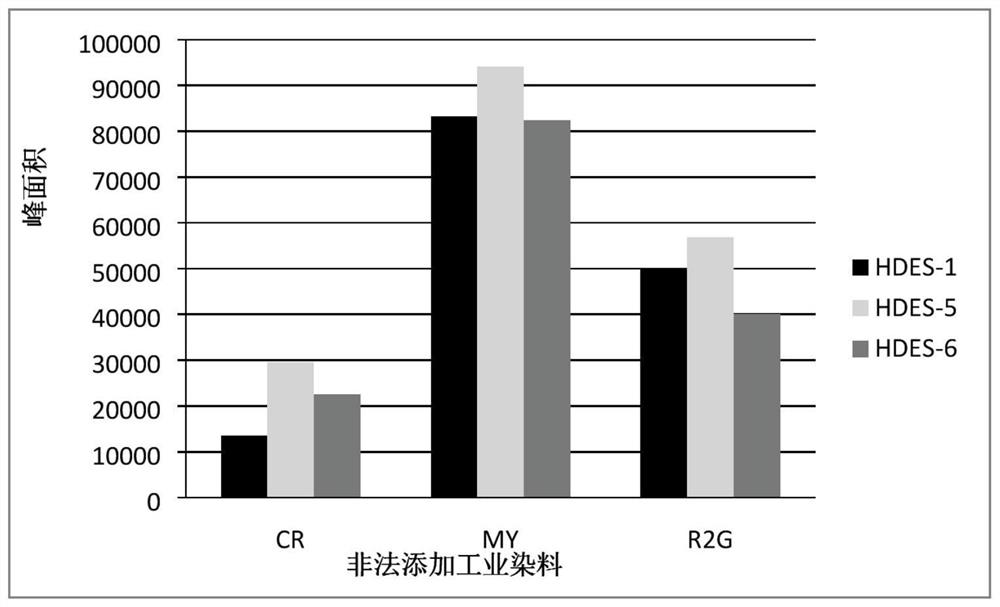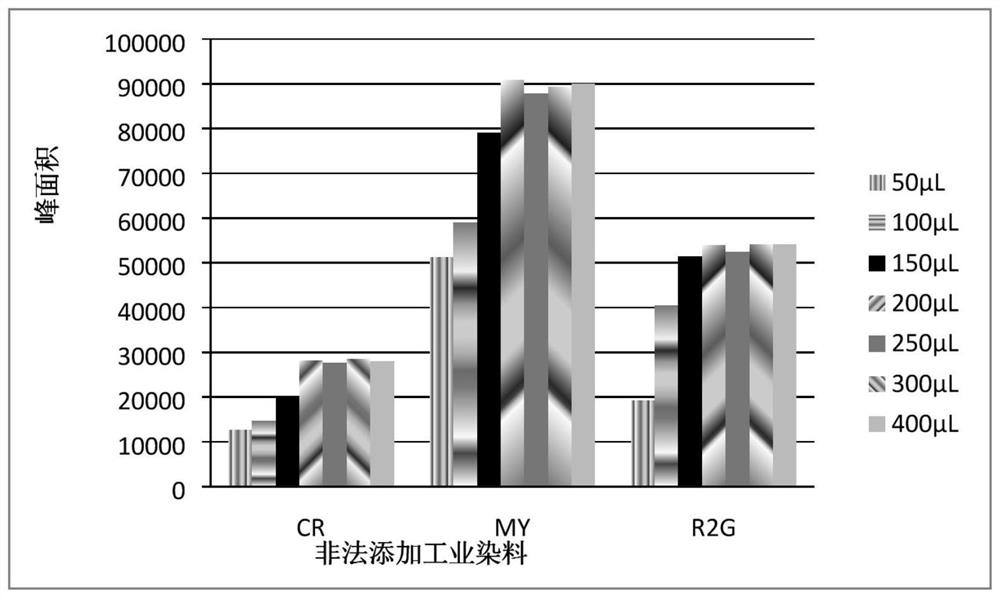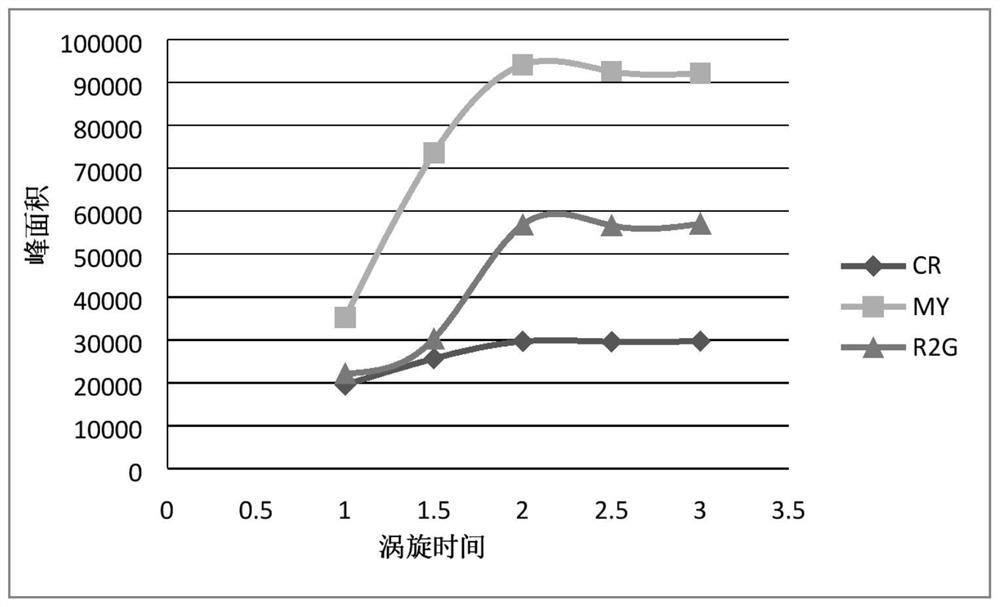Preparation of hydrophobic low-temperature co-melt and method for extracting Congo red, acidic golden yellow and red 2G from meat products and aquatic products
A low-temperature eutectic, hydrophobic technology, applied in the fields of food testing, aquatic product testing, and meat products, can solve the problems of cumbersome steps, respiratory tract damage, and large consumption of reagents, so as to simplify experimental steps, reduce testing costs, and reduce testing. cost effect
- Summary
- Abstract
- Description
- Claims
- Application Information
AI Technical Summary
Problems solved by technology
Method used
Image
Examples
Embodiment 1
[0051] A method for preparing hydrophobic low-temperature eutectics. Weigh different hydrogen bond donors and hydrogen bond acceptors in 25mL round bottom flasks, and heat them in an oil bath at 55°C until the two mixtures become completely transparent and clear. The liquid is fine, let cool to room temperature and set aside. The pairing relationship between the hydrogen bond acceptor and the hydrogen bond donor synthesized by the hydrophobic low temperature fusion is shown in Table 2.
[0052] Table 2 Synthesis table of hydrophobic low temperature eutectic
[0053]
[0054]
Embodiment 2
[0056] On the basis of Example 1, a detection method for three illegally added industrial dyes in meat products and aquatic products comprises the following steps:
[0057] Step 1. Take a dry sample. The ratio of sample g to water mL is 1:5. Ultrasound for 10 minutes, centrifuge at 10,000 rpm for 5 minutes, and take the supernatant. The samples include meat products or aquatic products. For meat products, take the muscle part, and for aquatic products Take the skin and meat part, homogenize and dry to obtain a dry sample;
[0058] Step 2. Put 200 μL HDES and all supernatants into a 10 mL glass syringe, vortex for 3 minutes, and let it stand for 2 minutes to produce oily droplets. Pipette all the oily droplets into a 2mL capped centrifuge tube, dissolve with acetonitrile and make to volume to 1.0 mL, pass through a 0.45 μm microporous organic filter membrane to obtain the filtrate;
[0059] Step 3, the filtrate is determined by liquid mass spectrometry.
PUM
 Login to View More
Login to View More Abstract
Description
Claims
Application Information
 Login to View More
Login to View More - R&D Engineer
- R&D Manager
- IP Professional
- Industry Leading Data Capabilities
- Powerful AI technology
- Patent DNA Extraction
Browse by: Latest US Patents, China's latest patents, Technical Efficacy Thesaurus, Application Domain, Technology Topic, Popular Technical Reports.
© 2024 PatSnap. All rights reserved.Legal|Privacy policy|Modern Slavery Act Transparency Statement|Sitemap|About US| Contact US: help@patsnap.com










